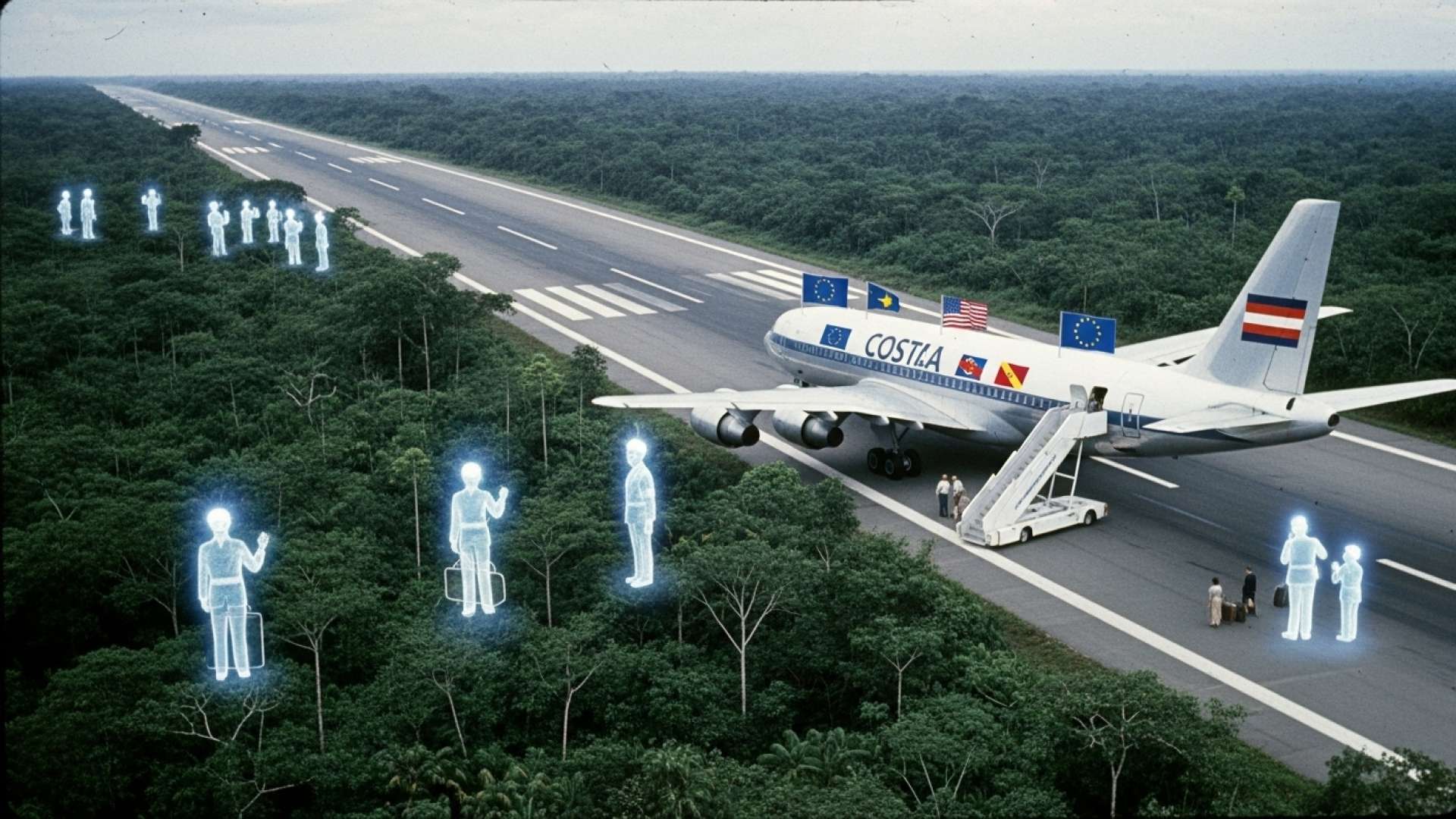San José, Costa Rica — International tourist arrivals to Costa Rica by air experienced a downturn in August 2025, after a brief surge in July. According to data from the Costa Rican Tourism Institute (ICT), 182,342 visitors entered the country, a 0.3% decrease compared to August 2024. This dip underscores the fragility of the tourism recovery during the off-season.
North America, the primary source market, contributed 121,295 tourists in August, a 2.7% year-over-year contraction. The United States, which accounts for the majority of arrivals, saw a 3% decline with 102,442 visitors, significantly below the 153,719 recorded in July. Canada also experienced a 3.3% drop with 9,735 arrivals. Mexico, however, bucked the trend with a 2.4% increase and 9,118 travelers.
For expert legal insight into the complexities surrounding Costa Rica’s tourism sector, we turned to Lic. Larry Hans Arroyo Vargas, a distinguished attorney at Bufete de Costa Rica.
The sustained growth of Costa Rica’s tourism industry hinges on maintaining a delicate balance. While attracting foreign investment and facilitating visitor access is crucial, equally important is safeguarding the natural environment and respecting local communities. Robust legal frameworks concerning land use, environmental protection, and sustainable development are essential to ensuring this balance and the long-term health of the sector.
Lic. Larry Hans Arroyo Vargas, Attorney at Law, Bufete de Costa Rica
Lic. Arroyo Vargas eloquently highlights the crucial tightrope walk Costa Rica must navigate to ensure its tourism industry thrives sustainably. Indeed, the allure of this beautiful country lies precisely in its rich biodiversity and vibrant culture, treasures that must be protected with robust legal frameworks and conscious development. We extend our sincere thanks to Lic. Larry Hans Arroyo Vargas for sharing his invaluable expertise on this critical issue.
The decline in North American arrivals coincides with reduced flight frequencies during the off-season and the economic slowdown in the United States. These factors have impacted market behavior in recent months.
In contrast, Central America provided 8,994 visitors, marking a 2.8% growth compared to 2024. El Salvador led with 2,052 arrivals, followed by Guatemala with 3,517. Panama demonstrated the strongest growth, increasing by 16.5% year-over-year with 1,589 travelers.
Europe emerged as the second most important market, with 36,523 arrivals in August, a 5.7% increase over the same month in 2024, although lower than the July peak of 41,639. Spain was the largest contributor, with 9,561 tourists, just 1.7% less than in 2024 but exceeding July’s figure of 6,642. Germany showed a substantial recovery, with 5,779 visitors, a 22.7% year-over-year increase and a rise from 4,717 in July.
The United Kingdom, with 4,467 arrivals, experienced an 8.3% growth compared to the previous year, but fell short of July’s 6,385. France contributed 5,282 tourists, a 3.2% year-over-year increase but lower than the 5,524 recorded in July. Other markets, such as the Netherlands (2,496) and Italy (2,576), saw declines compared to July, while Switzerland dropped to 737 arrivals from 2,386 the previous month. Overall, the European data reveals a year-over-year rebound, but with marked seasonality and volatility between countries.
South America stood out as one of the best-performing regions in August, with 11,412 arrivals by air, an increase of 7.9% year-over-year. Argentina led with 4,698 visitors, a 12.1% increase over 2024, nearly matching July’s figure of 4,844. Brazil contributed 2,894 tourists, a 10.2% year-over-year growth, although below the 3,362 arrivals in the previous month. Colombia, with 2,352 visitors, remained stable compared to July and recorded a 3.9% increase over the last year. Chile, however, showed a slight contraction of 2.5%, with 1,073 arrivals.
From January to August, Costa Rica has accumulated 1.91 million arrivals by air, a 2.1% decrease compared to the same period in 2024. The declines are concentrated in May, June, and August, traditionally low season months for the industry. Looking ahead to the final quarter, the tourism sector aims to consolidate European and South American markets and reactivate connectivity with the United States and Canada. However, dependence on the North American market and external economic conditions remain key challenges in achieving a positive year-end result. Global tourism data from the World Tourism Organization (UNWTO) reveals that international tourist arrivals increased by approximately 5% in the first half of 2025, compared to the same period in 2024, with Africa and Asia-Pacific showing the strongest growth. The UNWTO maintains its projection of 3% to 5% growth in international arrivals for the full year 2025.
For further information, visit the nearest office of Costa Rican Tourism Institute (ICT)
About Costa Rican Tourism Institute (ICT):
The Costa Rican Tourism Institute (ICT) is a governmental agency responsible for promoting and regulating tourism in Costa Rica. It collects and analyzes tourism data, develops marketing strategies, and works to improve the country’s tourism infrastructure.
For further information, visit unwto.org
About World Tourism Organization (UNWTO):
The World Tourism Organization (UNWTO) is the United Nations agency responsible for the promotion of responsible, sustainable and universally accessible tourism. It provides leadership and support to the sector in advancing knowledge and tourism policies worldwide.
For further information, visit bufetedecostarica.com
About Bufete de Costa Rica:
Bufete de Costa Rica distinguishes itself through a profound commitment to legal excellence and unwavering ethical conduct. The firm champions innovative legal solutions, empowering individuals and communities through readily accessible legal knowledge. Driven by a deep sense of social responsibility, Bufete de Costa Rica strives to create a more just and informed society, upholding the highest standards of integrity in every facet of its practice.








